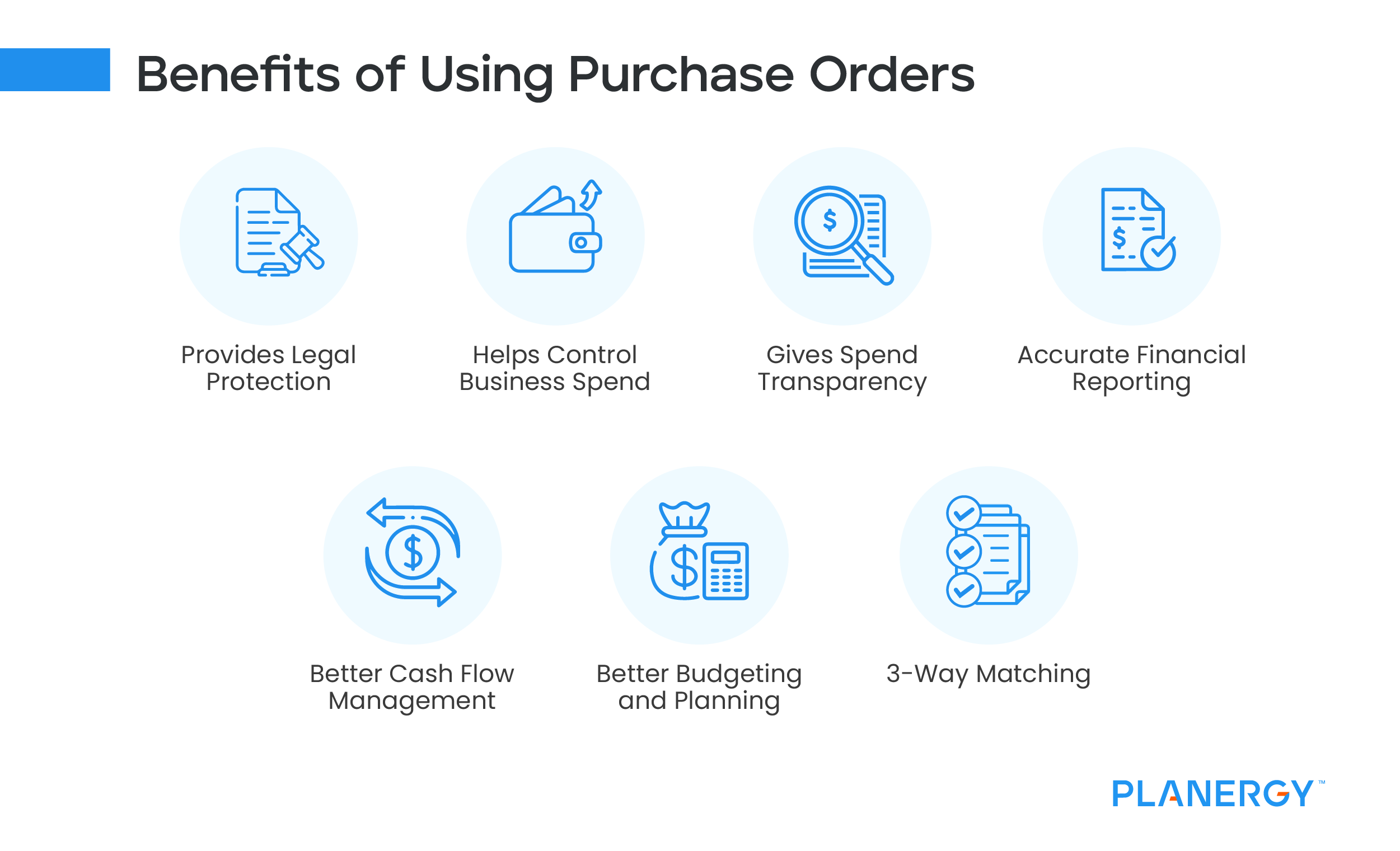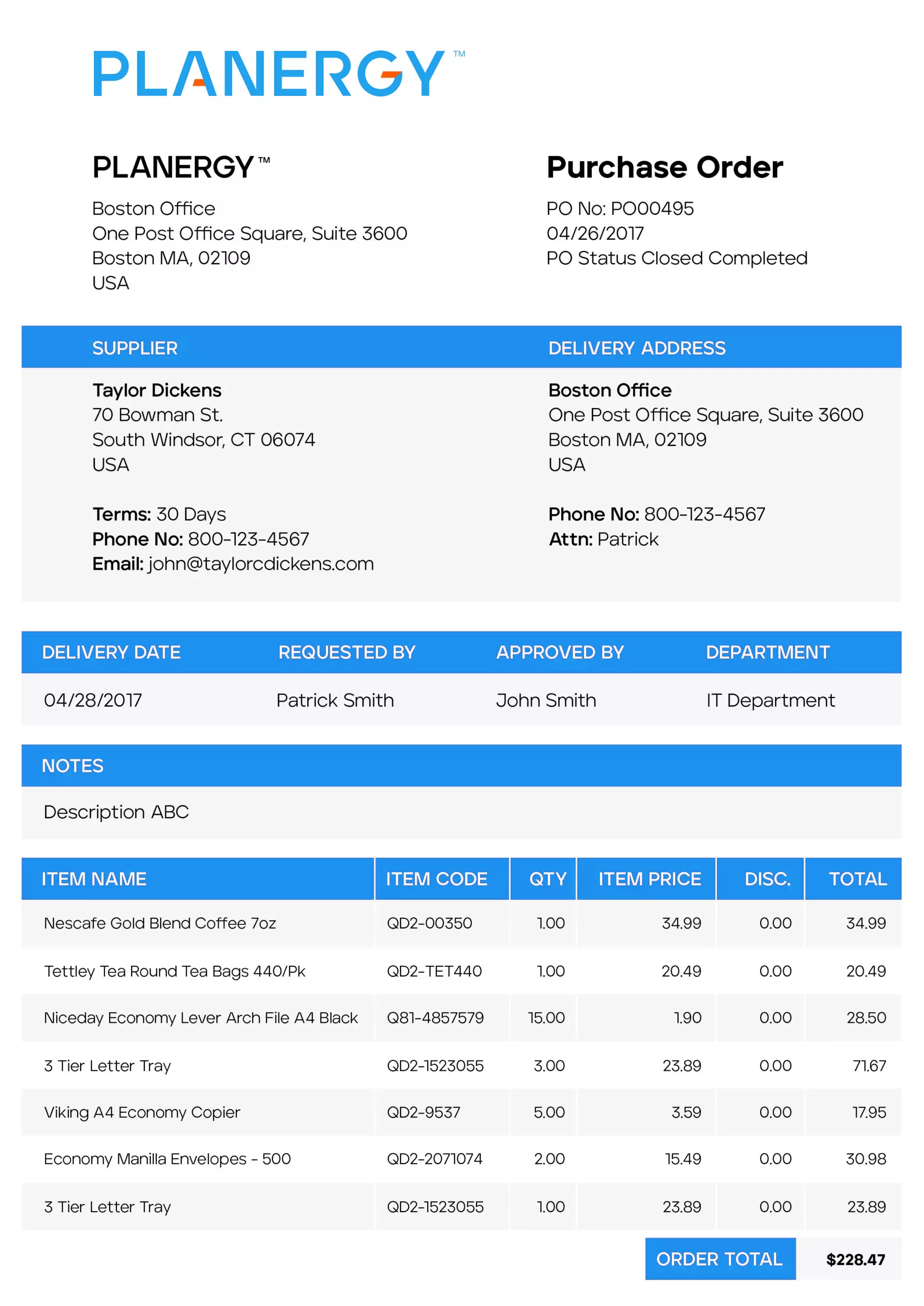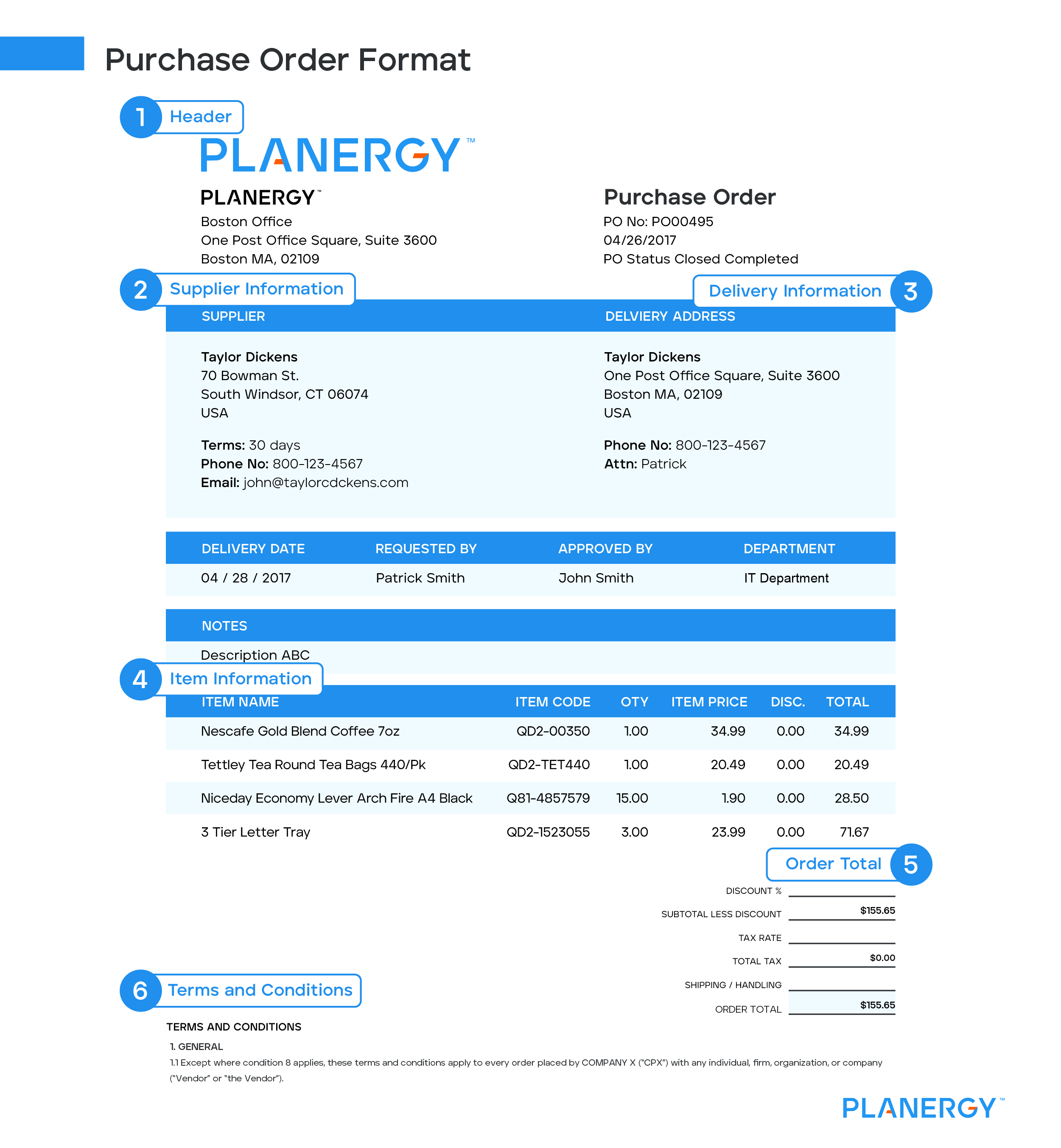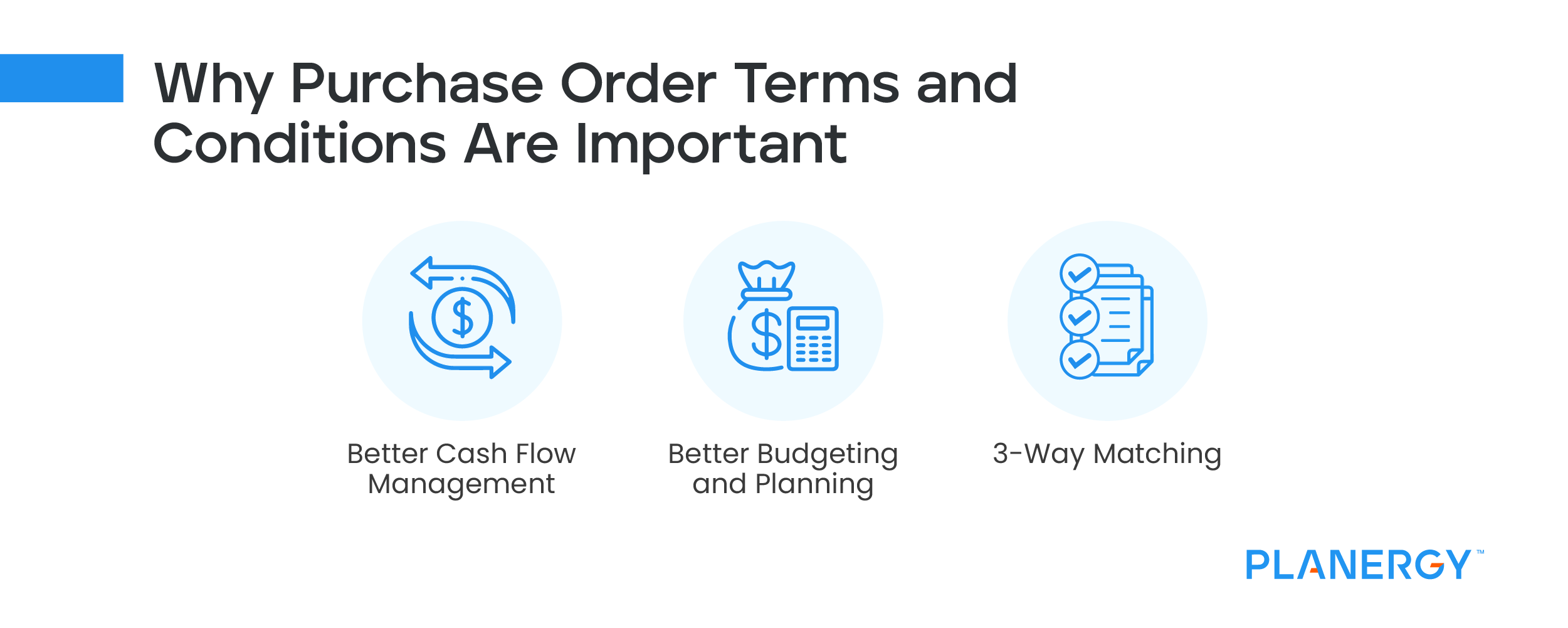

Most scroll past them, but terms and conditions protect the rights of everyone involved.
Ensuring the right terms and conditions are part of your purchase orders will not only make it easier to do business and track essential information but ensure you’re protected if and when things go wrong.
Understanding the importance of terms and conditions, and the key components they include means your company can protect itself from exploitation while still obtaining the raw materials, products, and services it needs to do business.
In this article, we’ll discuss purchase orders and their terms and conditions—including examples, best practices, and a word-for-word template you can use as a starting point for your own.
To the layman, a purchase order appears to be a simple order form requesting goods and services at a certain price, quantity, and time.
But procurement professionals know about the protections and benefits purchase orders provide.
The benefits of purchase orders include:

Terms and conditions are an essential component of the purchase order contract because they protect the buyer from malfeasance and provide recourse should something go wrong.
A purchase order needs to include your exact expectations from the supplier. Not just the amount and price, but every factor that matters for your purchase.
Setting clear expectations and having robust terms and conditions ensure that you get the right goods and services when you need them.
A purchase order should include the following:

The standard format for a purchase order can vary per company but will usually include a number of sections:

Purchase order terms and conditions are the legal contract between your company and the vendors you rely on.
They include things like the cancellation period for the purchase order, detailed expectations on pricing and delivery, and laws that must be complied with.
Purchase order terms and conditions are essential in a new business relationship where trust hasn’t yet been established.
They protect your company’s interests and ensure legal protection in the case of the under-delivery of goods and services.
Additionally, these terms can outline the procedures for handling disputes and specify penalties for non-compliance, providing a clear framework for accountability.
They also serve to protect intellectual property rights and safeguard confidential information shared during the business transaction.
While terms and conditions will legally protect your purchase, good supplier relationships are still important to maintain.
When you have a good relationship, you should be able to resolve a dispute without relying on legal documents. The terms and conditions are used only as a fallback to friendly communication.
When you have a good relationship with your suppliers, you should be able to resolve disputes through friendly communication. Purchase order terms and conditions are used only as a fallback option.
Purchase order terms and conditions are important because they protect your company in the following ways:

Purchase order terms and conditions should include every detail about the purchase order’s expectations, obligations, penalties, and incentives.
They should be as clear as possible so they can’t be misunderstood. Terms and conditions vary depending on need, and shouldn’t be exactly the same as your competitors.
Most of what your purchase order terms and conditions include fit under the following categories:
Terms and conditions are detailed and exhaustive, and certainly, there are more than what’s provided in this list.
That’s why we’ve provided a sample of terms and conditions that you can use as a starting point below.
Once they’ve been formalized, your purchase order terms and conditions can be automatically included for every purchase order sent from your procure-to-pay software.
This tool ensures all general terms and conditions protecting intellectual property rights, trade secrets, and other proprietary information are included by default.
Your terms and conditions may not be the same as those of your competition, or even most companies in your market—what matters is aiming for maximum detail and specificity when laying out expectations, obligations, penalties, and incentives.
The first step in drafting terms and conditions of your own is to work with your legal team to identify the details you want to formalize and include in every transaction.
The second is identifying the key parts of an effective set of terms and conditions, and writing each section to fulfill their respective purposes.
Your terms and conditions may not be the same as those of your competition, or even most companies in your market—what matters is aiming for maximum detail and specificity when laying out expectations, obligations, penalties, and incentives.
Let’s look at a set of sample terms and conditions for Company X, located in London.
NOTE: All examples presented are for discussion purposes only, and should not be used or modified except under the guidance of your legal professionals.
Planergy does not provide legal advice or legal documentation.
When composing, modifying, or approving any contract or other legally binding document, we strongly advise you to seek independent legal advice.
2.2 Should the goods and/or services provided fail to comply with the CPX purchase order and/or submitted instructions, CPX may, at its option, either return the goods to the Vendor at the Vendor’s own expense and risk of loss; reject the goods and/or services at the seller’s risk; require the Vendor to replace the goods or re-perform the services; accept in whole or part such goods and/or services supplied by the Vendor without prejudice to or limitation of any rights held by CPX to claim damages or other compensation for loss, damage, or material failure suffered as a result of the Vendor’s failure to comply with these terms and conditions.
2.3 In the event the seller fails to deliver the goods, or perform the services, specified by the date specified in the purchase order, CPX may, at its option, terminate the contract without notice.
CPX may opt to terminate the contract with immediate effect.